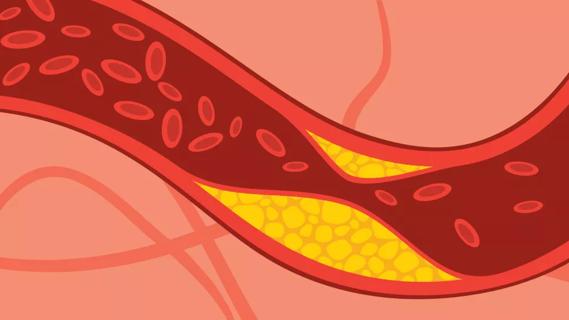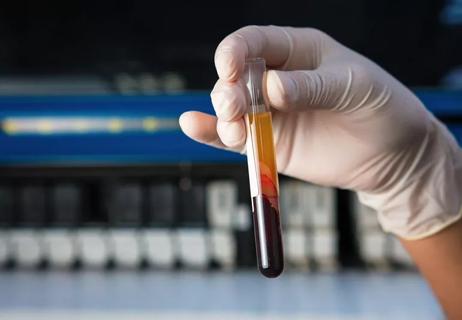Lifestyle changes can help you get your cholesterol under control

Just say the word “cholesterol” and faces crease with worry. Given cholesterol’s connection to heart attacks and strokes, this waxy type of fat in your body carries a well-deserved bad reputation.
Advertisement
Cleveland Clinic is a non-profit academic medical center. Advertising on our site helps support our mission. We do not endorse non-Cleveland Clinic products or services. Policy
But there’s a form of cholesterol that’s actually good for you… and you can use that to your advantage.
High-density lipoprotein (HDL) is one of two types of cholesterol you’ll find on lipid panel test results that screen for your risk of cardiovascular disease. The other is low-density lipoprotein (LDL).
“Think of HDL as the good, or helpful, cholesterol,” says cardiovascular medicine specialist Heba Wassif, MD, MPH. LDL, meanwhile, is the “lousy and less desirable” cholesterol.
So, how are they different? Let’s find out.
To understand “good” HDL cholesterol, you first need to learn about the “bad” LDL cholesterol.
LDL causes a plaque build-up in your blood vessels. These fatty deposits reduce or block the flow of blood and oxygen. Over time, that gunk on your artery walls can lead to a heart attack or stroke.
So, what does HDL do? Basically, it works in your bloodstream like a scavenger or cleaner, explains Dr. Wassif. The good HDL removes the bad LDL cholesterol from your blood, taking it to your liver to be excreted.
It’s your classic superhero-and-villain storyline.
To keep your system running at optimal levels, you want to keep your HDL high. Ideally, that’s 50 milligrams per deciliter of blood or higher. (The normal range is 40 to 59 mg per deciliter.) When HDL levels dip below 40 mg per deciliter, your risk of heart disease rises.
Advertisement
It’s also critical to keep your LDL low — ideally, under 100 — from an early age, given the accumulating damage caused by bad cholesterol. A study published in 2020 shows the increased risk that comes with long-term high levels.
Although medications can increase HDL cholesterol, research has shown they do not necessarily alter your risk of heart disease. “So, we often focus on suggesting lifestyle changes that can boost HDL levels and reduce your LDL,” says Dr. Wassif.
Here are ways to do that, according to recommendations from the American College of Cardiology and the American Heart Association.
The food you eat can help drive your cholesterol levels down, says Dr. Wassif. Trademarks of a heart-healthy diet include:
Just as important, though, is what you shouldn’t be piling on your plate. Animal fats and other saturated fats can send cholesterol levels soaring. That means it’s a good idea to limit your intake of:
The Mediterranean diet and DASH diet are two eating plans noted for their heart-healthy approach to food.
Physical activity builds more than muscle. It can also increase HDL levels, says Dr. Wassif.
Numerous studies show that moderate- to high-intensity exercise can boost your all-important HDL numbers. As an added bonus, working out also pushes your LDL numbers down.
Get your fitness however you desire, too. Try walking or running, for instance. If cycling is more your thing, hop on a bike. Or try swimming or yoga or weight training or … well, you get the picture. Even yard work fits in.
Set a goal of at least 150 minutes of moderate-intensity physical activity per week, or 75 minutes per week of vigorous-intensity activity.
Carrying extra pounds increases your odds of having higher cholesterol numbers — and not the good kind, either. Being overweight tends to increase LDL levels and push down your HDL count.
Adopting a healthier diet and exercise plan (see above) also can reduce the pounds popping up on your scale. A weight loss of 5% to 10% can improve your cholesterol numbers, according to the American Heart Association.
Add high cholesterol levels to the list of negative consequences from lighting up. Smoking and vaping drive down HDL levels while increasing your risk of coronary disease, high blood pressure and diabetes.
Advertisement
The good news? Quitting smoking brings rapid results: Research shows that HDL numbers typically rise fewer than three weeks after you snuff out that last cigarette.
Cholesterol issues often go hand-in-hand with high blood sugar (Type 2 diabetes) and high blood pressure. A healthy diet, regular exercise and controlling your weight are all key to managing your health.
High cholesterol often doesn’t announce itself early with a tell-tale sign. You might learn you have troubling numbers only after having a heart attack or a stroke.
Healthy adults should have their cholesterol checked through a blood test (lipid panel) every four to six years, according to the Centers for Disease Control and Prevention (CDC). Testing should be more frequent if you or your family has a history of heart disease or diabetes.
It’s not just adults who should be tested, either. The CDC also recommends that children have their cholesterol checked at least once between ages 9 and 11. The agency also recommends a test between ages 17 and 21.
Tests results can open discussions with your doctor about unique risk enhancers such as:
Advertisement
“Improving your cholesterol begins by knowing there’s an issue,” says Dr. Wassif. “Getting lipid panel test results can help guide you toward lifestyle choices and potential treatments that can improve good cholesterol and lower the bad.”
Advertisement
Learn more about our editorial process.
Advertisement

LDL cholesterol and lipoprotein (a) cholesterol are more likely to stick to your arteries and lead to dangerous heart events

The short answer from a cardiologist

Most recommended precautions center around minimizing bruising or swelling

Even one drink can have an impact on your cognitive function leading to slurred speech, blurred vision and impaired memory

Understand who may (and may not) benefit

Lorem ipsum dolor sit amet. Et odio Quis vel ipsam omnis eum alias deleniti et placeat impedit non voluptas galisum hic autem enim et cupiditate aliquid. Est beatae quidem non facilis autem ut commodi nisi aut tempore rerum et dolores voluptatem cum enim optio id sapiente quasi. Ad laboriosam officiis 33 cupiditate sequi ea voluptatum consectetur qui necessitatibus voluptate et quasi doloremque et facere explicabo quo explicabo officia

Type 2 diabetes isn’t inevitable with these dietary changes

Applying a hot or cold compress can help with pain